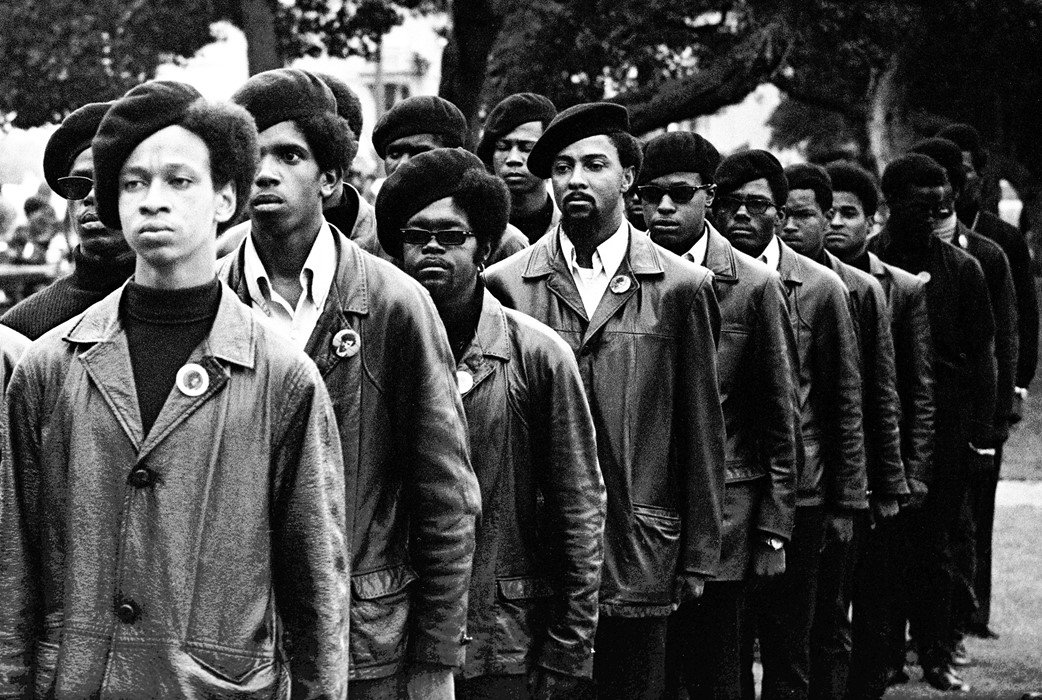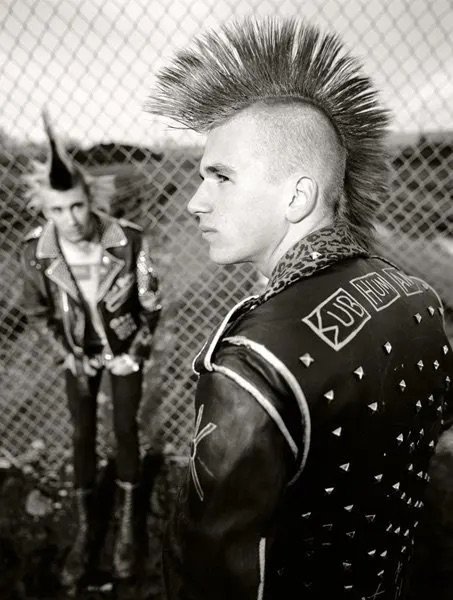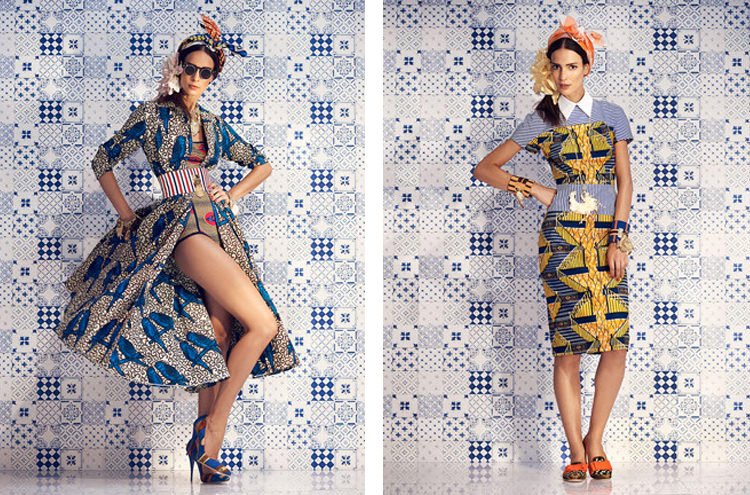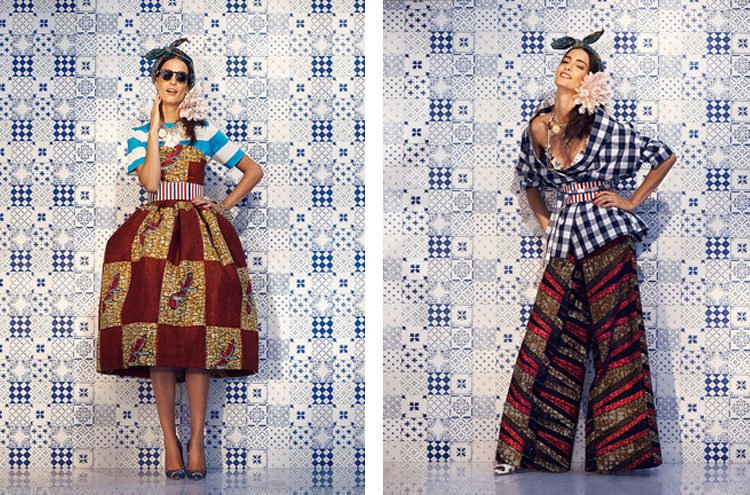The Evolution of Protest Fashion: A Powerful Tool for Social Commentary
Fashion, often seen as a reflection of societal norms and values, has long served as a potent medium for protest and social commentary. From subtle statements to bold declarations, designers and individuals alike have utilized clothing as a means to challenge authority, advocate for change, and express dissent. This article delves into the historical and contemporary use of protest fashion, examining key moments, designers, and movements that have shaped its evolution.
Historical Roots of Protest Fashion
Photo: Frank Wheeler Mondell, Representative from Wyoming with suffragettes at the Capitol 1914
Protest through fashion dates back centuries, with early examples found in the attire of suffragettes during the women's suffrage movement. In the late 19th and early 20th centuries, women challenged societal norms by wearing white dresses and sashes in green, white, and violet, symbolizing "Give Women the Vote" (GWV). This strategic use of clothing not only unified the movement but also made a visual statement in support of women's rights.
During the civil rights movement in the United States, clothing emerged as a powerful form of nonviolent protest. The Black Panthers, for instance, adopted distinctive black leather jackets and berets as part of their uniform. These choices were not merely stylistic; they symbolized a deliberate challenge to stereotypes and a bold assertion of unity and defiance against racial injustice. The stark contrast of black leather against prevailing societal norms sent a clear message of empowerment and resistance, encapsulating the Panthers' commitment to self-defense and community solidarity.
Photo: Panthers line up at a Free Huey rally in DeFremery Park, Oakland, July 28, 1968. Courtesy of Steven Kasher Gallery
Additionally, Afro-centric attire such as dashikis and kente cloth played a crucial role in the visual language of protest during this era. These garments were not just cultural symbols but powerful statements of pride in African heritage. By wearing dashikis and kente cloth, activists conveyed a profound resistance to cultural assimilation and affirmed their identity amidst a society that often marginalized or erased their history and traditions. Through their clothing choices, individuals asserted their right to artistic autonomy. They challenged the prevailing narratives of the time, making fashion a central component of their fight for equality and recognition.
The Counterculture of the 1960s and 1970s
The 1960s and 1970s marked a profound cultural shift where fashion became a powerful tool of protest within burgeoning countercultural movements. Amidst this era of social upheaval, hippies emerged as iconic figures rejecting mainstream values and embracing a lifestyle centered on peace, love, and communal living. Their distinctive attire, including tie-dye shirts, bell-bottom jeans, and peasant blouses, served as a fashion statement and as symbols of their anti-establishment ethos. These garments were crafted with vibrant colors and unconventional patterns, reflecting a rejection of traditional consumerism and a celebration of individuality and freedom.
Photo: Summer of Love, San Francisco 1967. Photo: Robert Altman
Photo: Ramsdell, S. (Photographer). (1970). Jan Barry at a Vietnam Veterans Against the War demonstration. Valley Forge, PA
Simultaneously, the anti-Vietnam War protests galvanized a distinct fashion expression rooted in political dissent. Participants in these protests often donned military-style jackets adorned with peace symbols, patches, and slogans that conveyed their opposition to the war and militarism. This fusion of military apparel with pacifist symbolism challenged the government's policies and transformed military fashion into a visual language of protest. By appropriating these symbols and styles, protestors articulated their resistance to authority and solidarity with global peace movements, illustrating how fashion could embody and amplify political messages during a profound social change.
Punk and Subversive Fashion in the 1980s
Photo: American Punk Boys
The punk movement of the 1980s epitomized fashion as a form of rebellion. Originating in the United Kingdom and quickly spreading globally, punk fashion was characterized by its deliberate defiance of convention. It often featured ripped clothing, safety pins used as accessories, and garments adorned with provocative slogans or political messages. This aesthetic was not just about clothing but a statement against mainstream society's norms and values.
Designers like Vivienne Westwood and Malcolm McLaren were at the forefront of the punk fashion movement, whose creations embodied and amplified the punk ethos. Westwood's designs showcased through her iconic store, SEX, and later at the influential fashion label, "World's End," challenged traditional ideas of beauty and propriety. McLaren, a designer and a music impresario, collaborated with Westwood to promote punk through fashion, music, and cultural commentary. Together, they created collections that not only shocked but also empowered a generation to embrace individuality and resist societal pressures to conform.
Photo: Vivienne Westwood and Malcolm McLaren’s fetish boutique “SEX”.
Photo: Left to right: Top, Vivienne Westwood and Malcolm McLaren, 1976, England. Museum no. T.93-2002. Top, Vivienne Westwood and Malcolm McLaren, 1976, England. Museum no. T.90-2002. © Vivienne Westwood and Malcolm McLaren/Victoria and Albert Museum, London
Punk fashion became a visual representation of rebellion and subversion, influencing not only the clothing choices of its adherents but also broader cultural attitudes toward self-expression and dissent. Its impact on fashion and society continues to resonate, serving as a testament to the enduring power of fashion as a vehicle for social commentary and personal identity.
Contemporary Expressions of Protest Fashion
Photo: Photo: Pink "Pussy Hats" stand out at the Women's March in Boston on Jan. 21, 2017. (Jesse Costa/WBUR)
In contemporary times, protest fashion has become a powerful tool for expressing dissent and solidarity in response to pressing social and political issues. The 2017 Women's Marches that swept across the globe following the inauguration of a prominent political figure saw a notable display of protest fashion: the pink "pussy hats." These handmade hats, worn by participants of all genders, aimed to symbolize unity, feminism, and resistance against sexist rhetoric. However, despite their widespread adoption, the pink pussy hats sparked debates about inclusivity within feminist movements. Critics argued that the hats were not inclusive of all women, particularly women of color and transgender women, as the color pink and the focus on genitalia were seen as exclusionary.
Beyond grassroots movements, the fashion industry has increasingly become a site of activism and critique. Designers like Stella McCartney have emerged as champions of sustainable and cruelty-free fashion, challenging the industry's traditional practices that often prioritize profit over environmental and ethical considerations. McCartney's commitment to using vegan materials and promoting sustainable fashion practices reflects a broader shift towards more responsible consumption and production in the fashion world.
Photo: Force 1 x Colin Kaepernick shoe. Nike
Similarly, major brands like Nike have harnessed their influence to advocate for social justice causes through their advertising campaigns. Nike's decision to feature Colin Kaepernick, the NFL quarterback who famously kneeled during the national anthem to protest racial injustice and police brutality, in their "Just Do It" campaign sparked widespread discussion and controversy. By aligning with Kaepernick's activism, Nike supported his cause and used its platform to amplify the conversation around systemic racism and the role of athletes in promoting social change.
These examples illustrate how protest fashion and activism within the fashion industry reshape cultural conversations and challenge societal norms. As movements for social justice continue to gain momentum, fashion remains a dynamic and influential medium through which individuals and brands alike can express their values, provoke dialogue, and drive meaningful change.
Designers as Agents of Change
One of Stella Jean's most notable collections, which exemplifies her commitment to multiculturalism and social justice, is her Spring/Summer 2014 collection. This collection vividly showcases her dedication to promoting diversity and inclusivity within the fashion industry while celebrating her Haitian-Italian heritage.
The Spring/Summer 2014 collection is a vibrant tapestry of cultural influences, featuring bold patterns, bright colors, and intricate detailing that reflect the rich artistic traditions of various cultures. Jean incorporated fabrics and techniques from Haitian and African artisans, infusing the collection with a global interconnectedness. For instance, she used traditional wax prints, often sourced directly from African communities, blending them with Italian tailoring to create unique, eye-catching silhouettes.
Photo: Stella Jean Spring Summer 2014
By partnering with artisans from these marginalized communities, Jean showcased their craftsmanship and provided them with economic opportunities. This collaboration ensured the artisans received fair compensation and recognition for their work, promoting sustainable and ethical fashion practices. The collection was well-received by the fashion industry and praised for its bold aesthetic and its message of cultural appreciation and economic empowerment.
Photo: Photo: Stella Jean Spring Summer 2014
Stella Jean's Spring/Summer 2014 collection is a powerful example of how fashion can transcend mere aesthetics to become a platform for social change. Through her thoughtful integration of multicultural elements and commitment to ethical collaborations, Jean has demonstrated how designers can leverage their influence to advocate for a more inclusive and just fashion industry.
Fashion in the Digital Age
Photo: Image via BBC.com
Social media has dramatically amplified the impact of protest fashion, allowing movements like #BlackLivesMatter and #MeToo to gain unprecedented global visibility and support. Platforms such as Instagram and Twitter have become powerful tools for activists and influencers to share images of protest attire, transforming fashion into a vital component of online activism. The rapid dissemination of visual content enables these movements to reach a wider audience, fostering a sense of solidarity and encouraging collective action. Fashion statements worn at protests are quickly shared and re-shared, creating a visual narrative that complements and strengthens the messages of these social movements.
Photo: Slogan Black Lives Matter T-shirts went mainstream in 2020, worn by sportspeople, celebrities and protesters (Credit: Getty Images)
Moreover, social media allows marginalized voices to be heard and for grassroots movements to flourish. Influencers and activists use their platforms to highlight injustices and promote causes, often leveraging their fashion choices to make bold statements. For example, during the #MeToo movement, individuals shared images wearing black to symbolize solidarity against sexual harassment and assault. Similarly, during Black Lives Matter protests, clothing and accessories bearing slogans and symbols of the movement have been widely circulated online, further embedding fashion into the fabric of social discourse. In this digital age, fashion not only reflects the zeitgeist but also actively shapes and propels social change, demonstrating its enduring power as a tool for protest and commentary.
Challenges and Critiques
Despite its potential for empowerment, protest fashion also faces significant critiques. One major concern is the commodification of activism, where the genuine messages of social movements are diluted into mere marketing opportunities. Brands and designers sometimes co-opt protest symbols and slogans for commercial gain, raising questions about the authenticity and integrity of their involvement. This trend can undermine the seriousness of the issues at hand, reducing complex social and political struggles to fashionable trends. The commercialization of protest fashion risks trivializing the movements it aims to support, potentially alienating those who are genuinely invested in the cause.
Furthermore, there is ongoing debate about whether wearing symbols of protest translates into meaningful action or merely performs activism without substantive change. Critics argue that donning a piece of protest fashion, such as a T-shirt with a slogan or a symbolic accessory, can create a false sense of accomplishment. This performative activism, where individuals feel they have contributed to a cause simply by wearing certain clothing, may detract from the necessity of engaging in more impactful actions such as voting, organizing, or direct advocacy. The challenge lies in ensuring that protest fashion serves as a catalyst for real change rather than a superficial gesture.
The Future of Protest Fashion
As societal issues continue to evolve, so too will protest fashion. Designers and activists will likely continue to innovate, finding new ways to use clothing as a tool for social commentary and resistance. The future of protest fashion may see even greater emphasis on sustainable practices, with designers creating eco-friendly garments that align with environmental and ethical values. Inclusive designs that cater to a diverse range of body types, cultures, and identities will also become more prevalent, reflecting a broader commitment to equality and representation within the fashion industry.
Whether through sustainable practices, inclusive designs, or direct statements against injustice, fashion will remain a dynamic and influential force in shaping conversations and challenging the status quo. Fashion's ability to convey powerful messages and unify individuals around common causes will ensure its continued relevance in the realm of social activism. As long as societal challenges exist, protest fashion will serve as a creative and impactful medium for expressing dissent and advocating for change.
Protest fashion transcends mere trends; it embodies the spirit of resistance, solidarity, and societal transformation. From suffragettes to contemporary activists, individuals have used clothing to voice dissent, challenge norms, and advocate for justice. As we navigate an increasingly interconnected world, fashion's role in protest will continue to evolve, reflecting—and shaping—the complex tapestry of global social movements and cultural change. This evolution highlights fashion's enduring power as a tool for expressing collective aspirations and driving meaningful societal progress.














